The Vancouver Chain Saw Collectors Group received an invitation to display Vintage Chain Saws at the 2004 Agrifair July 29th to August 2nd. Abbotsford is about 30 minutes drive east of Vancouver on highway 1. The invitation was made by the Fraser Valley Antique Farm Machinery Association who have members that collect all sorts of Antique Farm Machinery from Tractors to Cream Separators. They have their own building on the Abbotsford Exhibition Grounds that is used to store all manner of machinery, houses a workshop and meeting room. We were invited to have an inside static display and an outside action display. Below you see the FVAFMA "Pioneer Barn", home of the Association and site of our static display.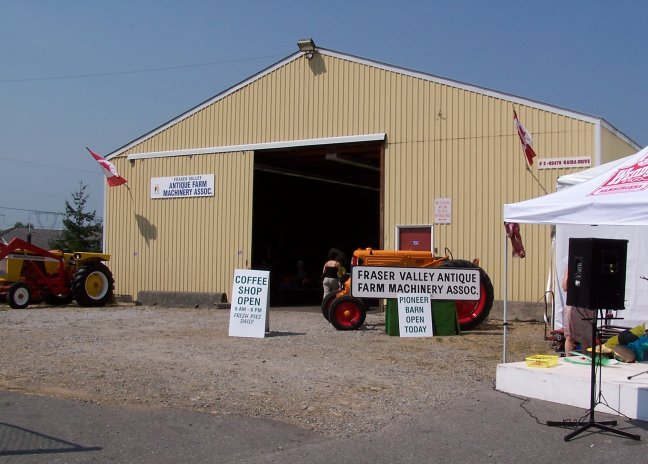
The theme of all the displays was to educate the visitors about life on the farm in the early days and to this end there were many working displays. Inside demonstrations were conducted twice per day. The milk from the milking parlor elsewhere on the Fair site was brought to the Pioneer Barm and used in a cream separating demonstration using a hand crank separator. There were demonstrations of an egg sorting machine, corn husking and grinding, halter rope makeing using binder twine, antique hand and early electric washing machines. Kids had great fun wringing out an old sock with a hand crank wringer. Next to our saw display was the Abbotsford Quilting Guild display with many lovely quilts.
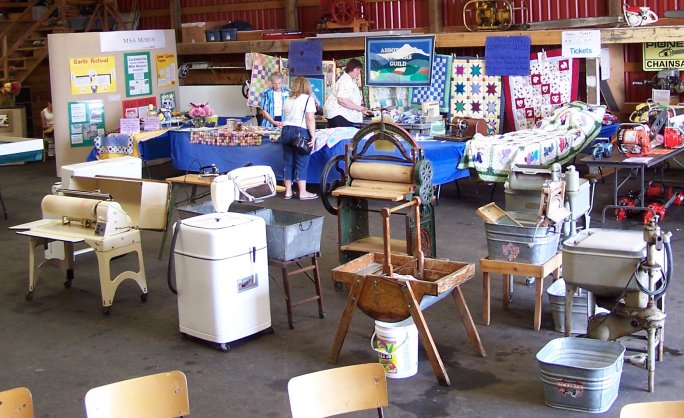
There was a demonstration of wood turning, a display of Lionel electric trains, a display by the MSA Museum and a coffee shop that offered huge cinnamon buns and delicious home made pies.
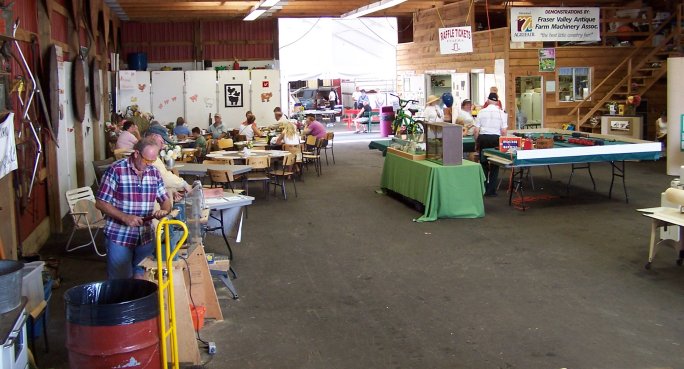
Our inside display consisted of 9 tables of saws. In most cases we had a table for each make of saw.
Sitting up on the upper deck we had a SKIL model 1686 gear drive with 50" Remington roller nose bar, then a Homelite 900D with 36" bar and on the extreme right a Homelite 900G with 42" bar.
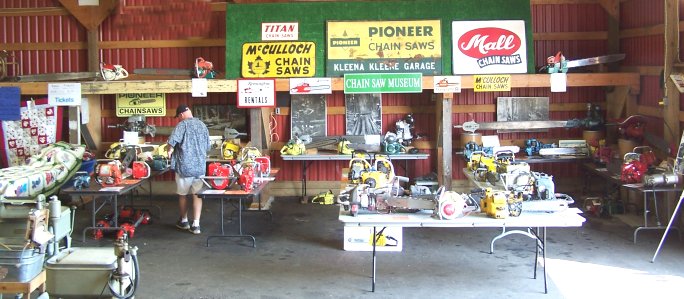
There was more than one table for IEL brand saws because we had so many of them to display. For each saw there was a specification sheet on display listing the year of manufacture and specifications. All saws were in good to excellent mechanical condition or were fully restored and 8 were brand new.
The first IEL table had a 2-man model G and one man saws models RA, HC, HM and AB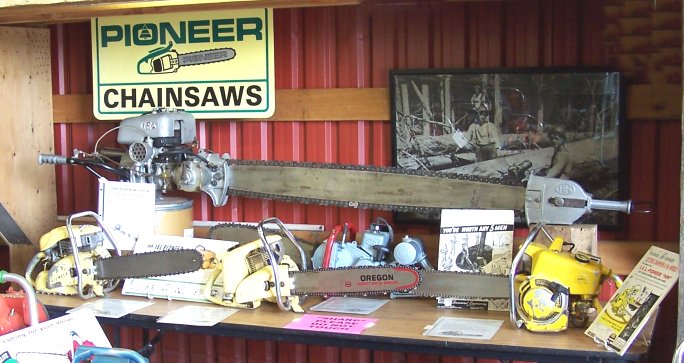
The second IEL table had all fully restored saws. Two man model PD and one man saws HA, DA and JA
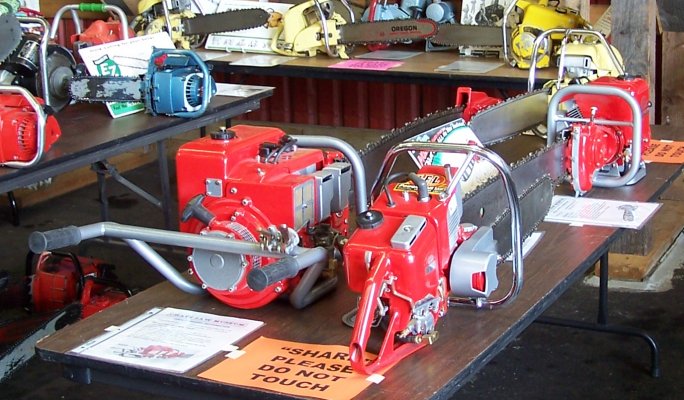
The third table was a conbined IEL and Pioneer one with the original IEL two man model K flanked by a 650, a P35 and a 2400.
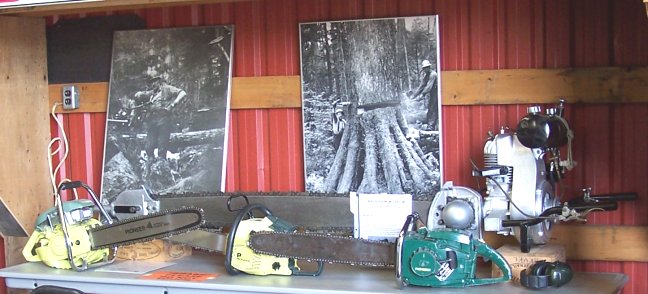
The Titan table had a two man model E along with a one man Junior 200, a 40 and a Sportsman.
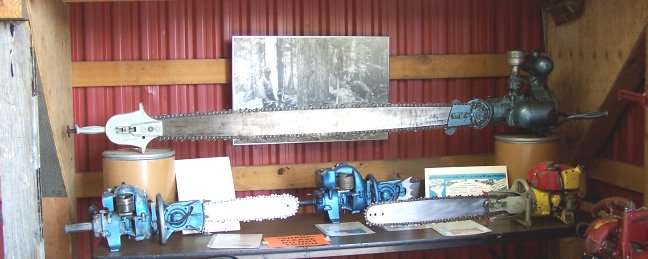
On the Mall table we had a two man model 11 along with a one man model 12, a GP and a 2MG. For added interest we also had a very early electric model 4.
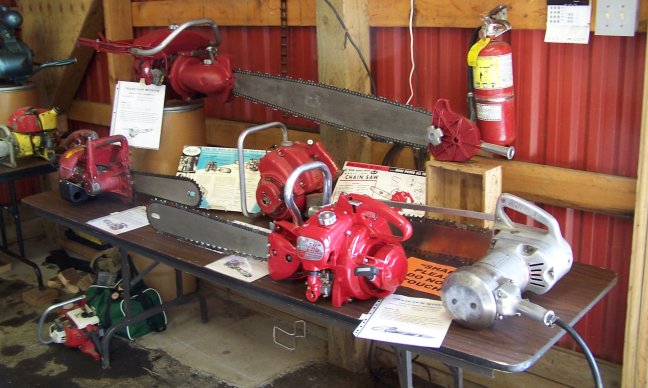
The Homelite table had so many saws we split it up and took some to the outside display. We ended with 20MCS, 26LCS and EZ on the inside table.
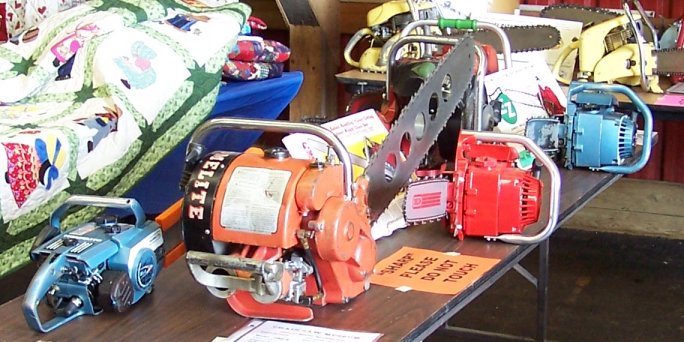
The McCulloch table had a 2-man model 12-25A and one man saws the 3-25, Super 44, PM10-10S and a SP-125
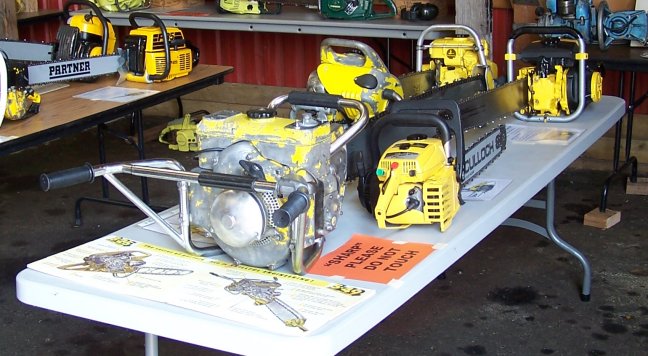
On the Partner table we had a C6, their first chain saw model plus an R11, R12, TS and a P85.
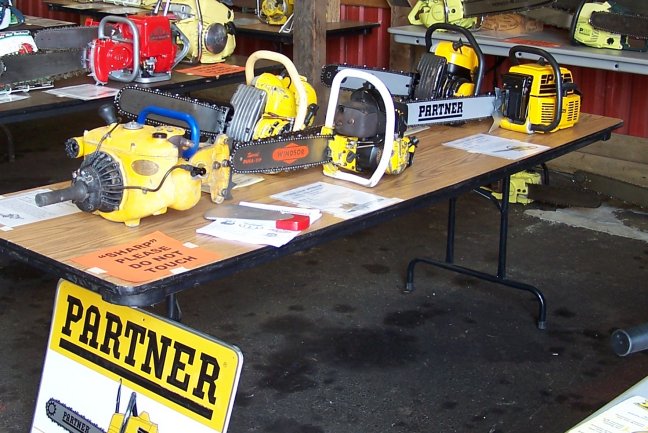
The last table had two brands of saw on display. There was a Hornet two-man model D and a one man model DJ-3600H. Then we had three PM saws, a Woodboss, a Redhead and a 19A.
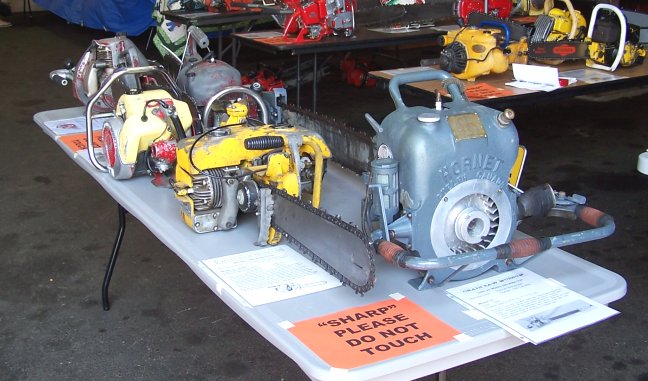
Outside the FVAFMA had displays of hit and miss gasoline engines, farm tractors and related farm machinery.
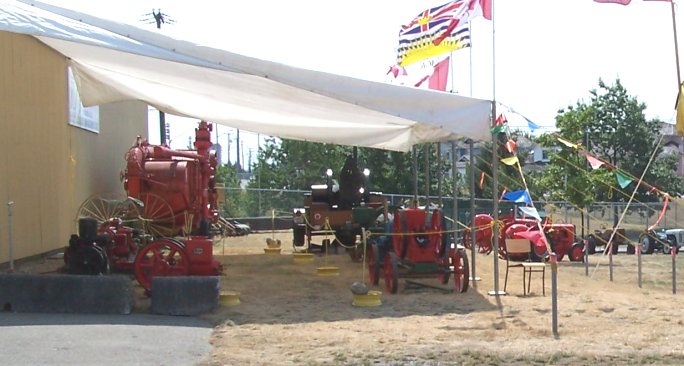
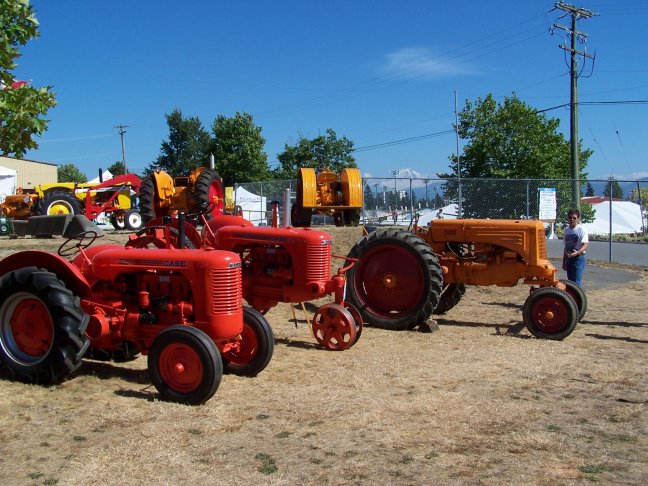
Twice a day there was a crew of farriers with an excellent propane fired mobile forge and equipment that made horse shoes from raw steel stock and demonstrated their trade which included shoeing a number of horses.
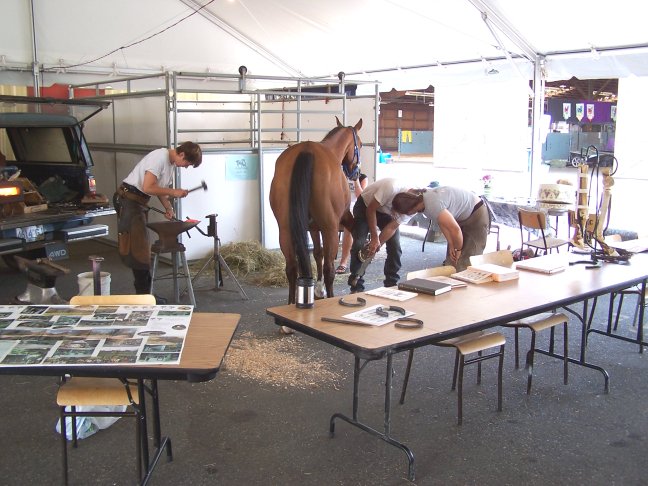
Twice a day there was a demonstration of actual grain thrashing utilizing a belt driven McCormick Deering machine.
The spectators were provided with a covered seating area. When a quantity of grain was "in the bag" the grain was then fed into a belt driven fanning mill to remove the chaff.
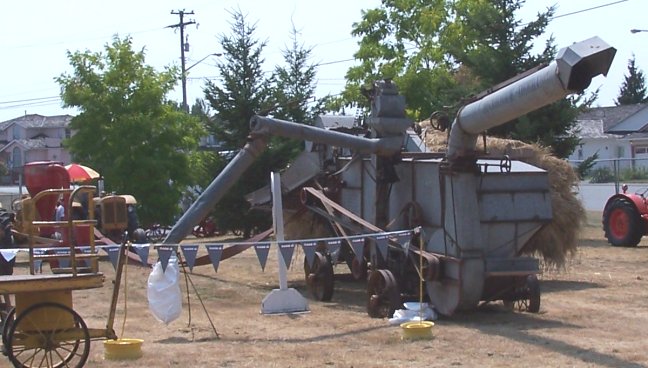 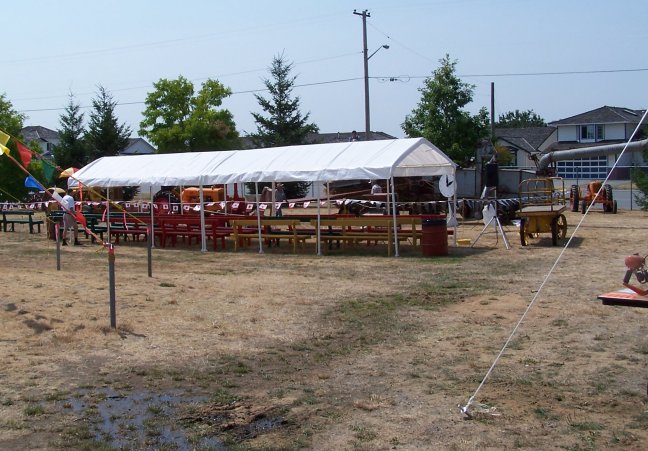
Our outside display consisted of 4 tables of saws plus our 5 "running" machines.
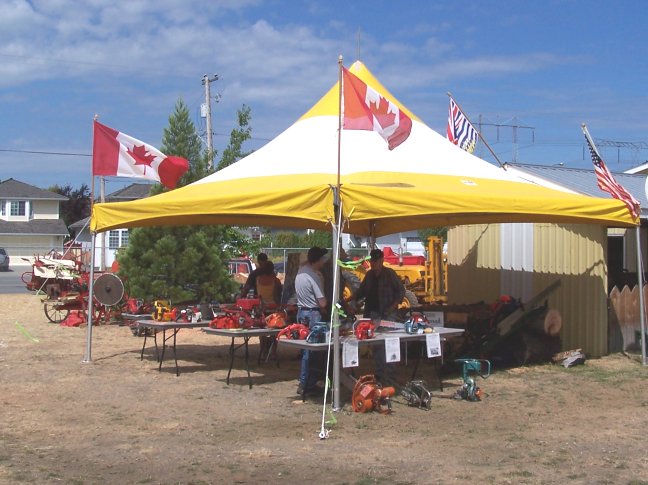
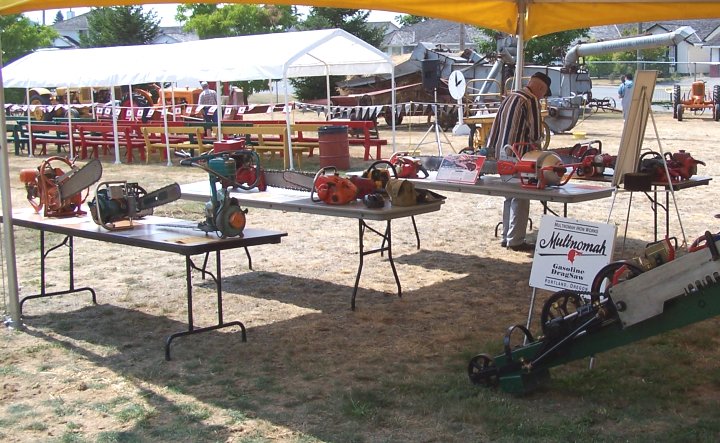
On the first table we had a Danarm "HiBaller" model, a Jonsered XC Diesel chain saw, a Druzhba and a Dolmar KMS4 rotary engine unit. The second table had a Two-man Spear & Jackson model Junior, a Dolmar CA, a Husqvarna G90, F70, a Jonsered XH and a Partner 55 cut-away model. The third table had a Remington PL-4 cut-away model, a two-man Disston DA-211 model and a JOBU Junior. The fourth table had a McCulloch BP-1, a Companion, a Metrom FM60, a Stihl BLK, a Sibu, a Jonsered XF, and a SOLO Twin.
The outside Homelite table had two XL-12's, one red and one blue, a XL76, a XL130, a Super Mini and an XL1.
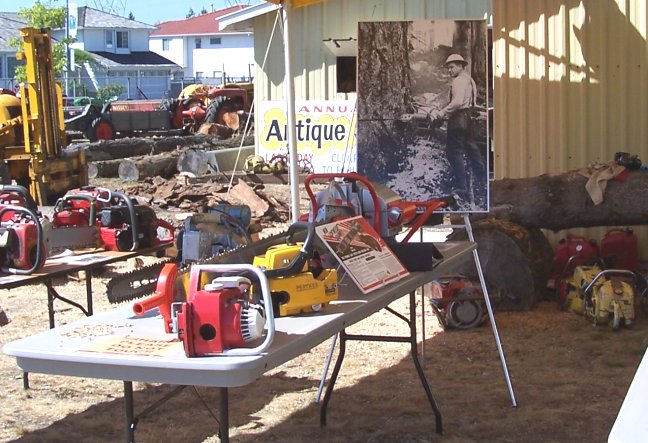 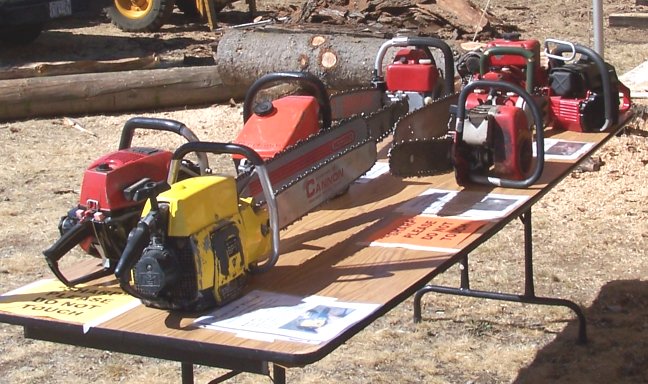
The Multnomah Drag Saw is owned and operated by Alex Fabiszewski, a member of the FVAFMA.
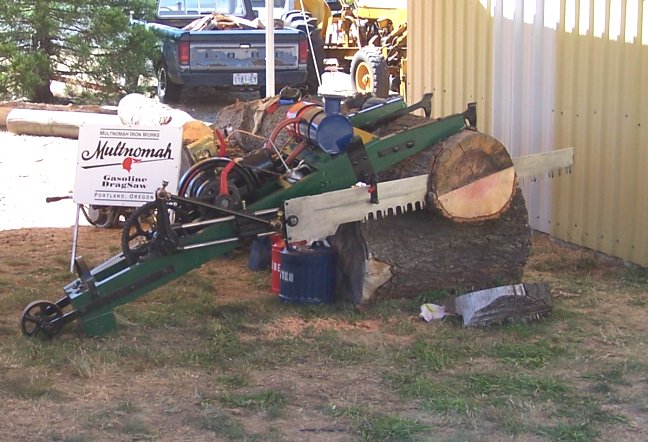 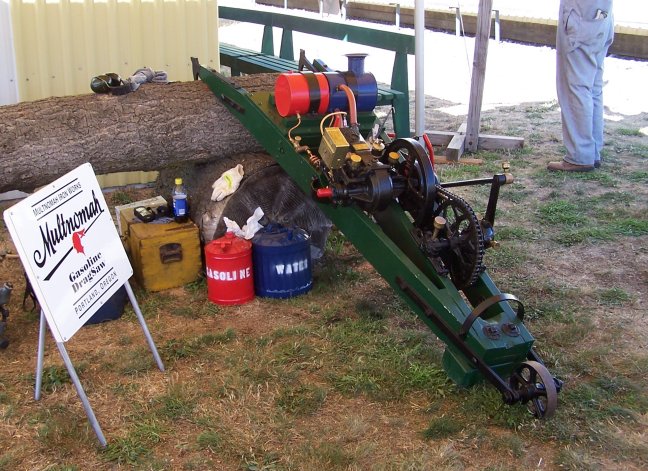
As soon as the thresing display was over the attention of the spectators was turned in our direction. First Alex Fabiszewski put his Multnomah drag saw through it's paces on the nice fir log that was specially set up for him to cut.
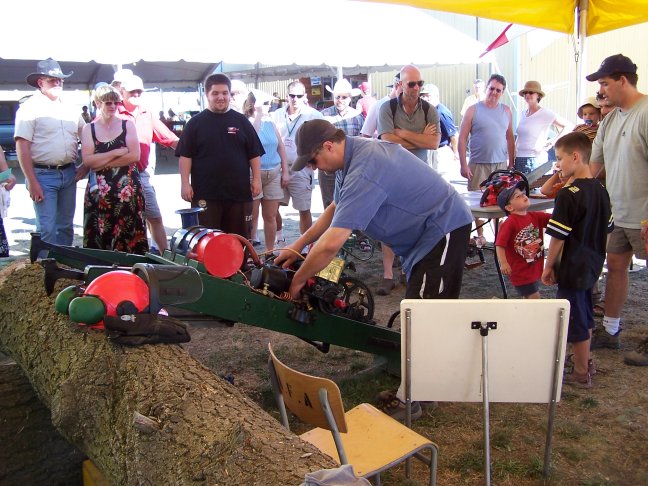 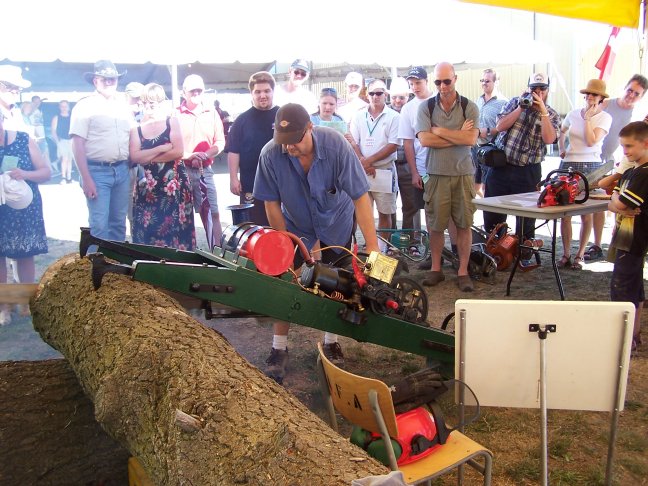
Len Rumpel provided the commentary for all the outdoor demonstrations and most of the indoor ones as well. Here he is having Alex explain some of the intricacies of his drag saw.
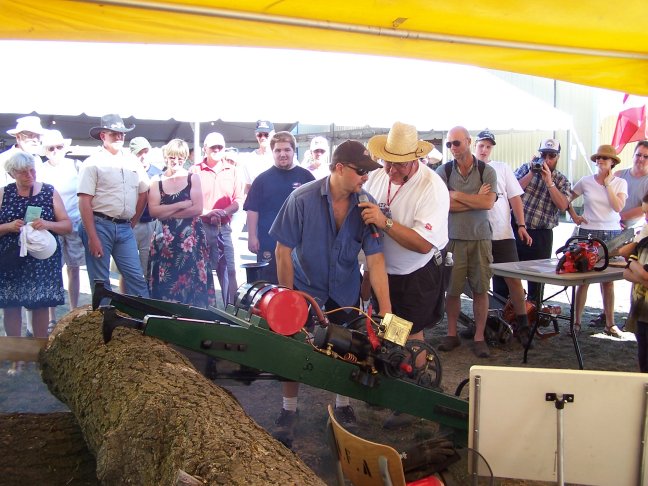
Then it was our turn to demonstrate some of our antique chain saws.
We had a Titan 40 operating and even though it took two of us to get it going it made an impressive cut. Lowell did this demonstration. The Titan 40 was introduced to the marketplace in 1950. Gear drive and float carburetor. To choke
the engine for starting you placed your thumb over the air intake.
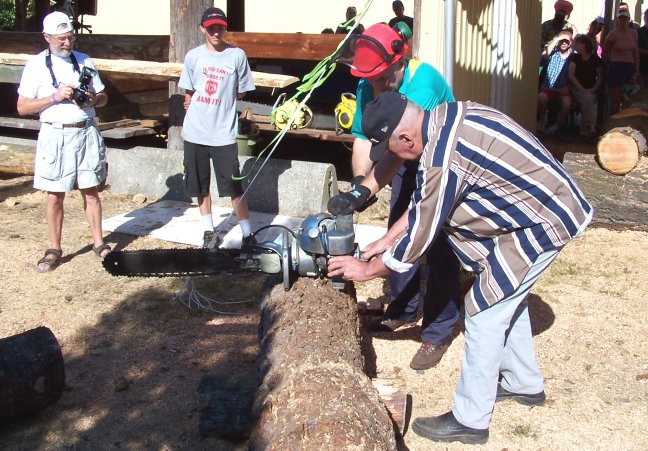
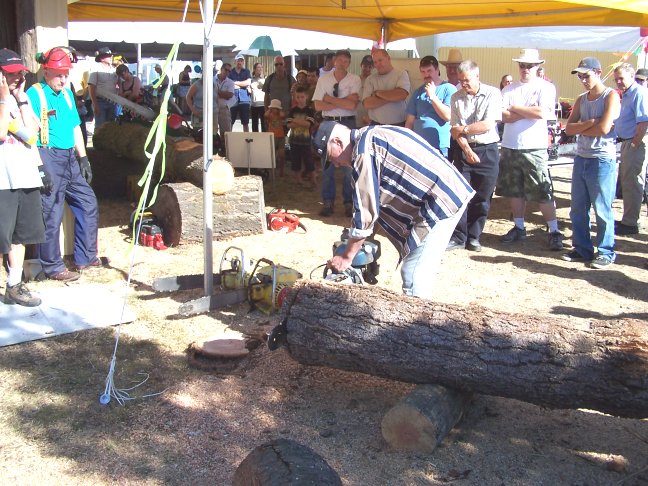
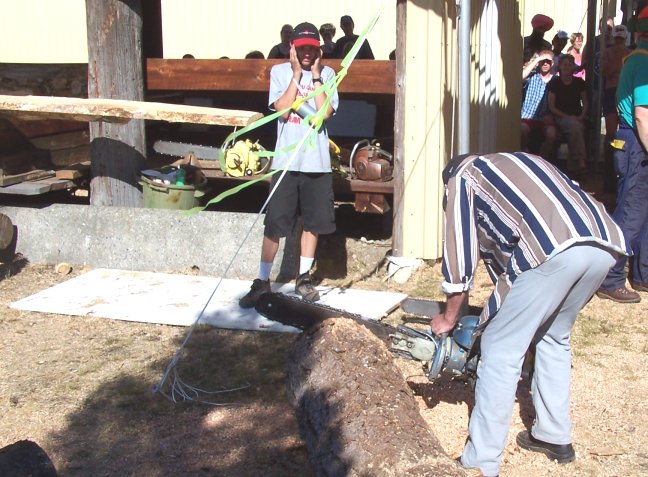
We had to demonstrate how the bar swivelled to do a felling cut.
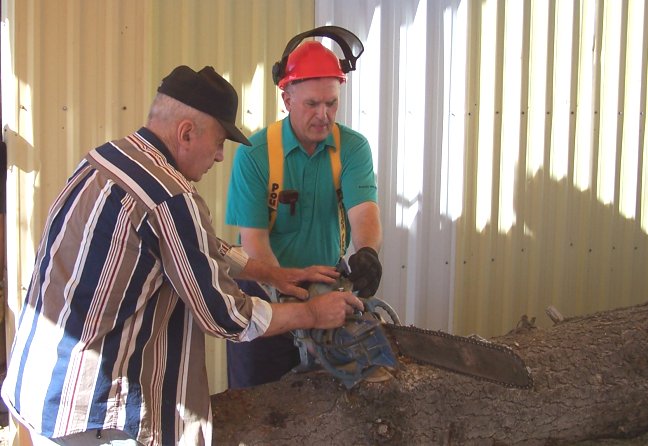
Then we made a cut with an IEL model HC. We explained the gear drive versus the direct drive with all
position carburetor and higher revving engine. The HC was sold during 1956 and into 1957.
Next saw to be demonstrated was the big brother to the IEL HC the model JA. The JA was also introduced to the marketplace in 1956 but was a 126 cc engine size as compared to 85 cc for the HC. This saw was equipped with a Roller nose bar so we made a down cut and an up cut.
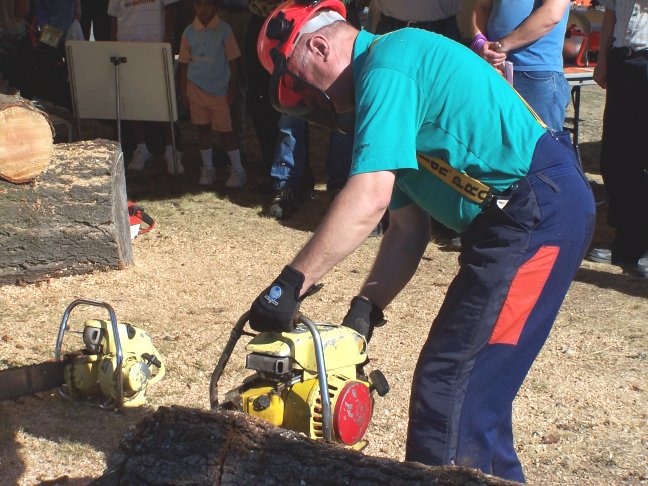 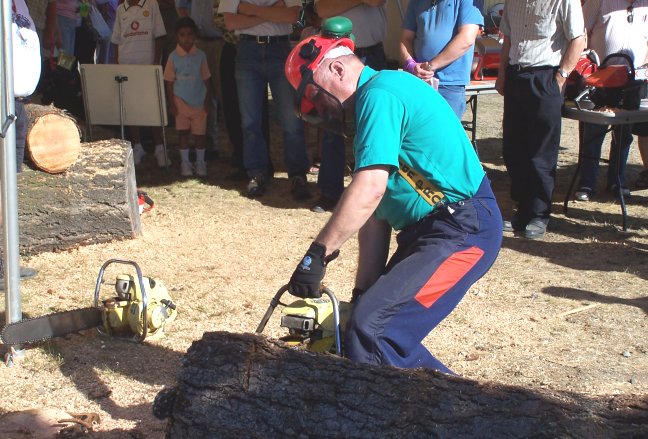
The next saw demonstration was a Homelite XL902 operated by Art Patterson. This brought us up to 1970 and a higher revving engie than the IEL HC or JA. More noise too as the 902 has a real bark.
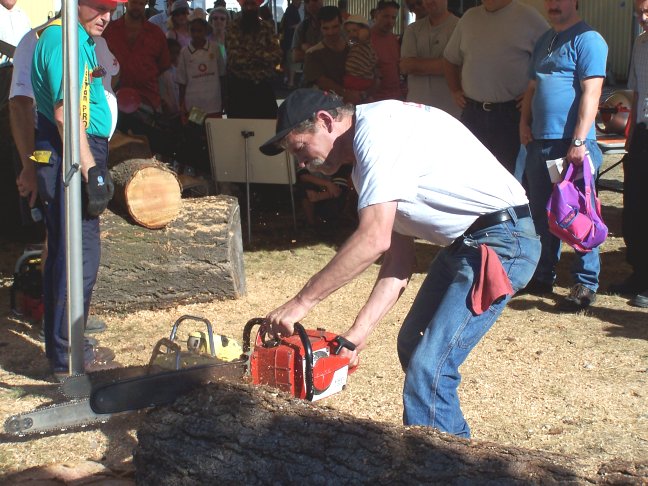
Our last demonstration was with the IEL Super Twin. What a pleasure it is to cut with this saw. Started first pull
every time too. This was our example of a TWO-MAN saw, gear drive with swivel transmission, 3/4 inch pitch chain.
It was made during 1954. Ron Gear is on the outer end handle.
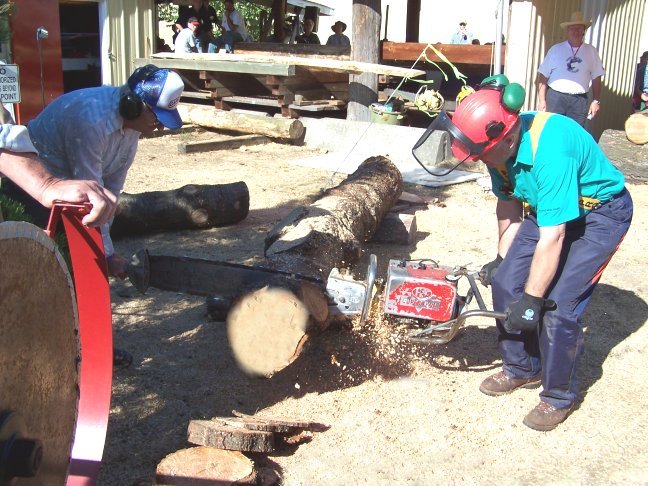
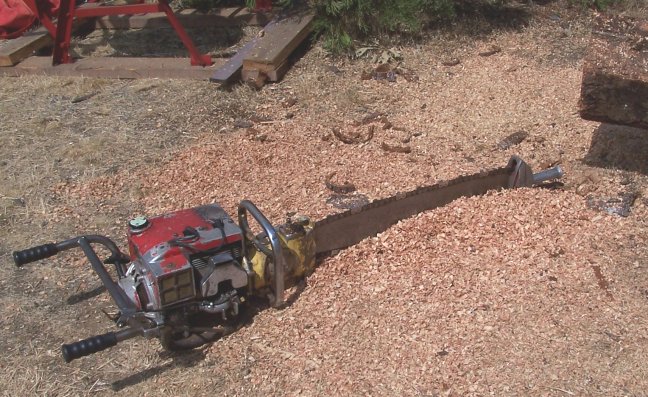
As soon as we finished our demonstration of the operation of antique chain saws the attention of the
spectators was directed to the small saw mill right beside our tent. This is a premanent installation
on the fair ground and is part of the Fraser Valley Antique Farm Machinery Association display.
It is in operating condition and twice a day produced some raw lumber. Power for the mill is provided
by a vintage Caterpillar D342 diesel engine driving direct to the mandrel of the head saw. The D342 is
the power unit version of the engine used in 2U series Caterpillar tractors of the D8 variety.
Here we see a log that has been squared up all ready for the afternoon sawmilling demonstration. Slabs have been cut off 4 sides so actual boards will be produced when the demonstration begins.
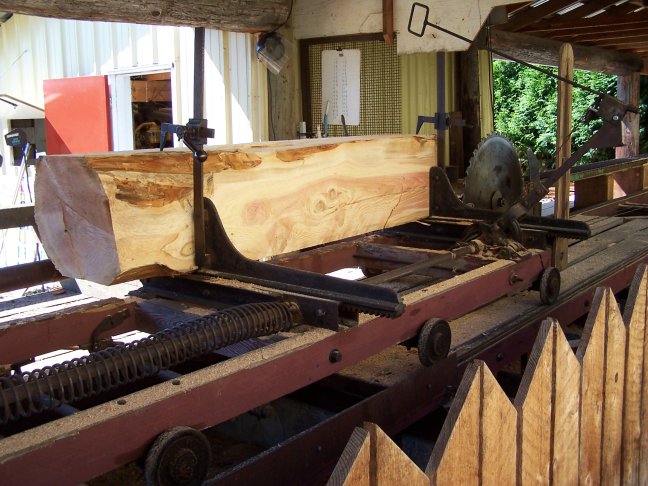
The mill could be purchased as a kit and was used by farmers to cut railroad ties from the trees that were on homesteads in the Fraser Valley. Originally the powere would have been a tractor via a large flat belt.
The carriage is of the cable drive type. Here we see the first board being cut from the squared log.
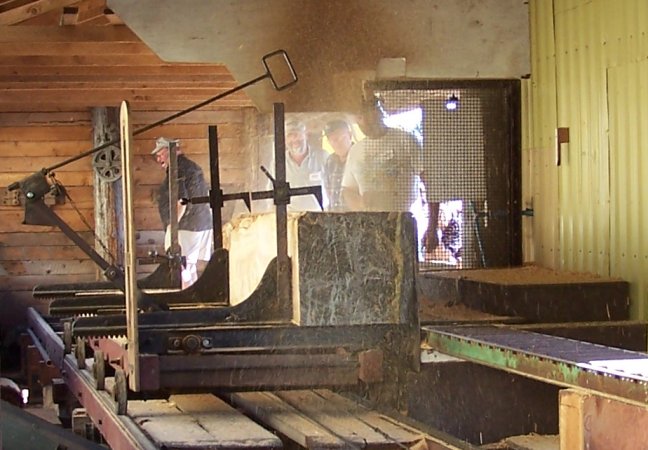
The sawyer is the key to everything that takes place during the operation of the mill. Here we see
Earl Masztalar at the controls.
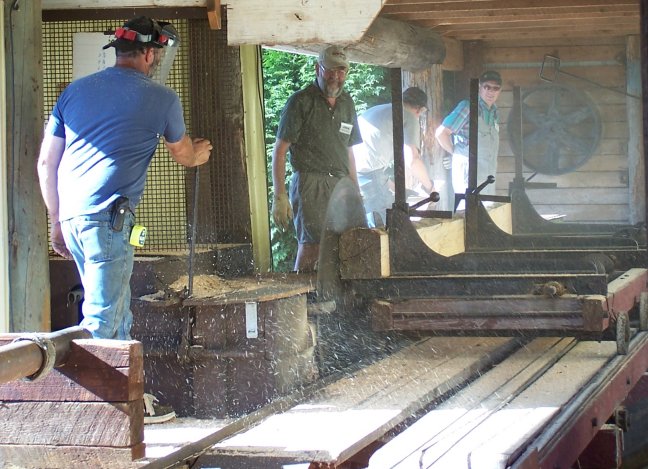
All the settings are done manually, the log must be turned by hand with cant hooks and the
"dogs" set by hand.
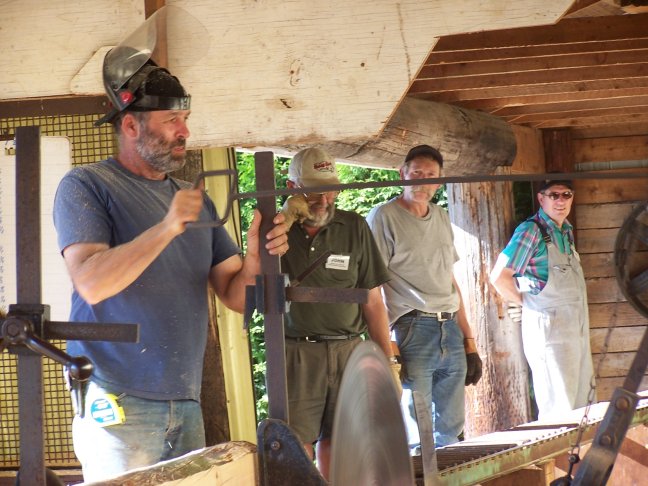
Deciding what width of board to cut to fully utilize the available wood is important
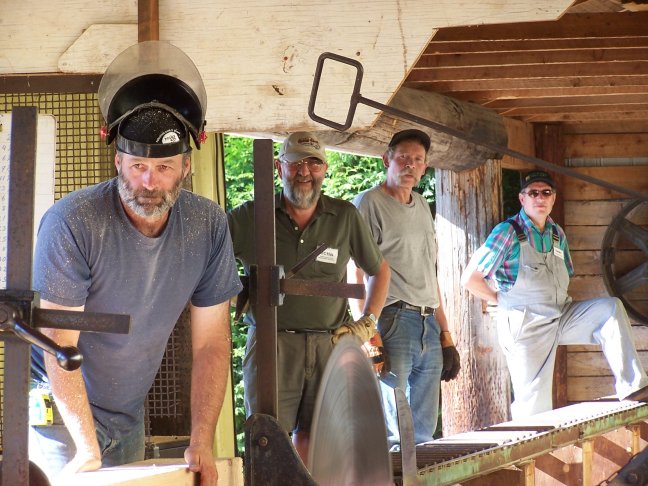
The end result of eveyone labours, nice planks.
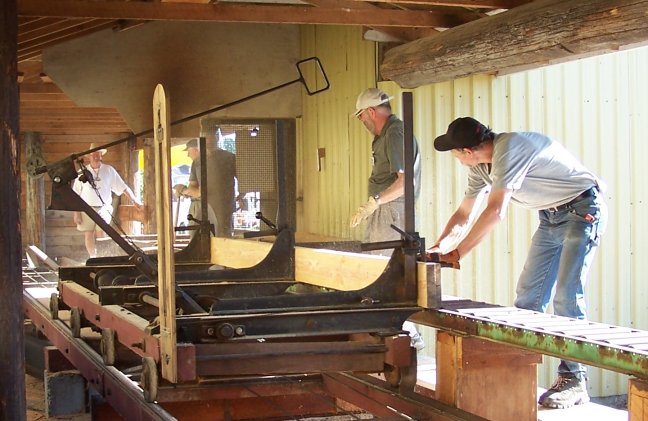
There is no waste with this little mill. The slabs are cut into firewood size and are used to produce
heat during the winter. The sawdust can be used in the stalls of animals on the farm.
Here we see Ron Gear cutting the slabs with the help of Art Patterson.
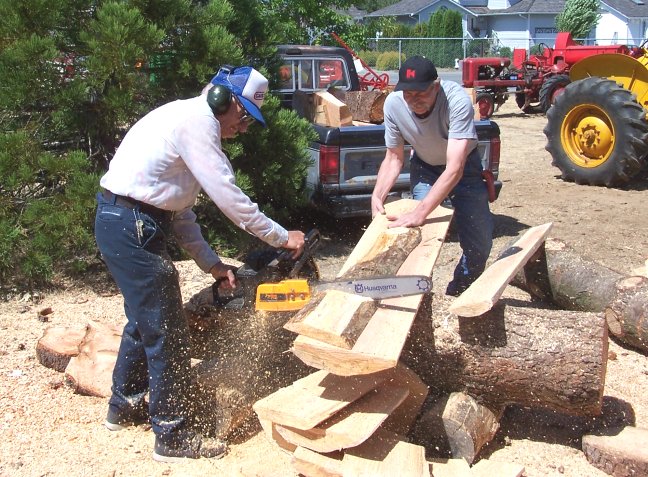
The crew. Left to right: Mike Acres, Lowell Boyd, Earl Masztalar (sawyer), Len Rumpel (commentary on PA system),
Ron Gear, Art Patterson. Earl and Len are FVAFMA members.
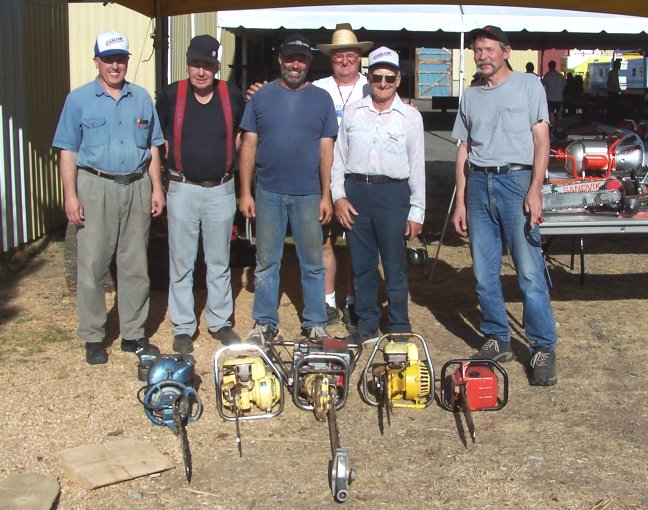 |